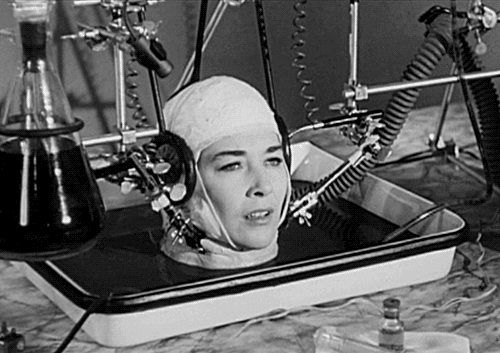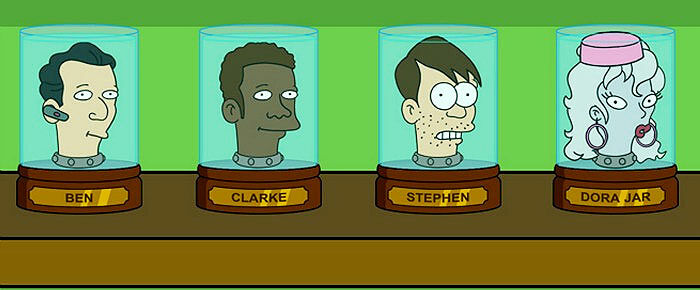Full Body Transplant: Human Head Swaps May Only Be A Few Years Away
OK, there's no need to lose your head over this news, but science is a few years away from a full body transplant. What does that mean? Well, by around 2017 we could be seeing the first operation that transposes someone's head onto another person's body.
We have hit Futurama crazy sci-fi horror territory here, but neurosurgeon Dr. Sergio Canavero from the Turin Advanced Neuromodulation Group in Italy has mapped out how to graft a person's—a living person's—head onto a donor body and believes that the technology needed to do it is only a few years away.
He plans to announce the plans at the American Academy of Neurological and Orthopaedic Surgeons (AANOS) in June. Major obstacles that have prevented it have been getting the spinal cord to fuse and the new body's immune system rejecting the head, but Canavero thinks he has a solution.

While there are ethical question to address, the procedure could give people with spinal injuries or people whose muscles and nerves have degenerated or whose organs are cancer-ridden, a chance at a new life—one which doesn't have to be spent in a wheelchair.
"If society doesn't want it, I won't do it." Canavero told New Scientist. "But if people don't want it in the US or Europe, that doesn't mean it won't be done somewhere else. I'm trying to go about this the right way, but before going to the moon, you want to make sure people will follow you."
According to New Scientist here's how the procedure will work:
It involves cooling the recipient's head and the donor body to extend the time their cells can survive without oxygen. The tissue around the neck is dissected and the major blood vessels are linked using tiny tubes, before the spinal cords of each person are cut. Cleanly severing the cords is key, says Canavero.
The recipient's head is then moved onto the donor body and the two ends of the spinal cord – which resemble two densely packed bundles of spaghetti – are fused together. To achieve this, Canavero intends to flush the area with a chemical called polyethylene glycol, and follow up with several hours of injections of the same stuff. Just like hot water makes dry spaghetti stick together, polyethylene glycol encourages the fat in cell membranes to mesh.
Next, the muscles and blood supply would be sutured and the recipient kept in a coma for three or four weeks to prevent movement. Implanted electrodes would provide regular electrical stimulation to the spinal cord, because research suggests this can strengthen new nerve connections.
When the recipient wakes up, Canavero predicts they would be able to move and feel their face and would speak with the same voice. He says that physiotherapy would enable the person to walk within a year. Several people have already volunteered to get a new body, he says.

via New Scientist